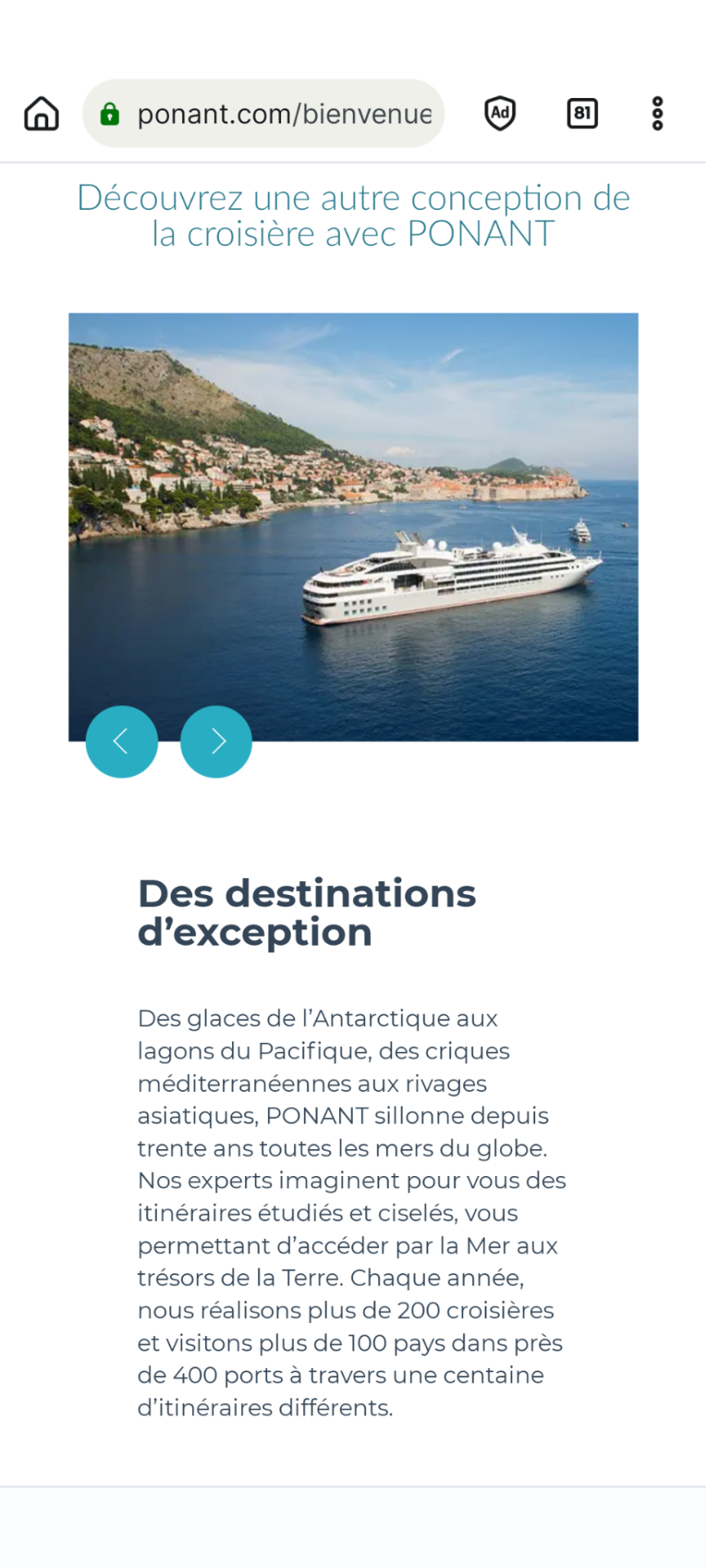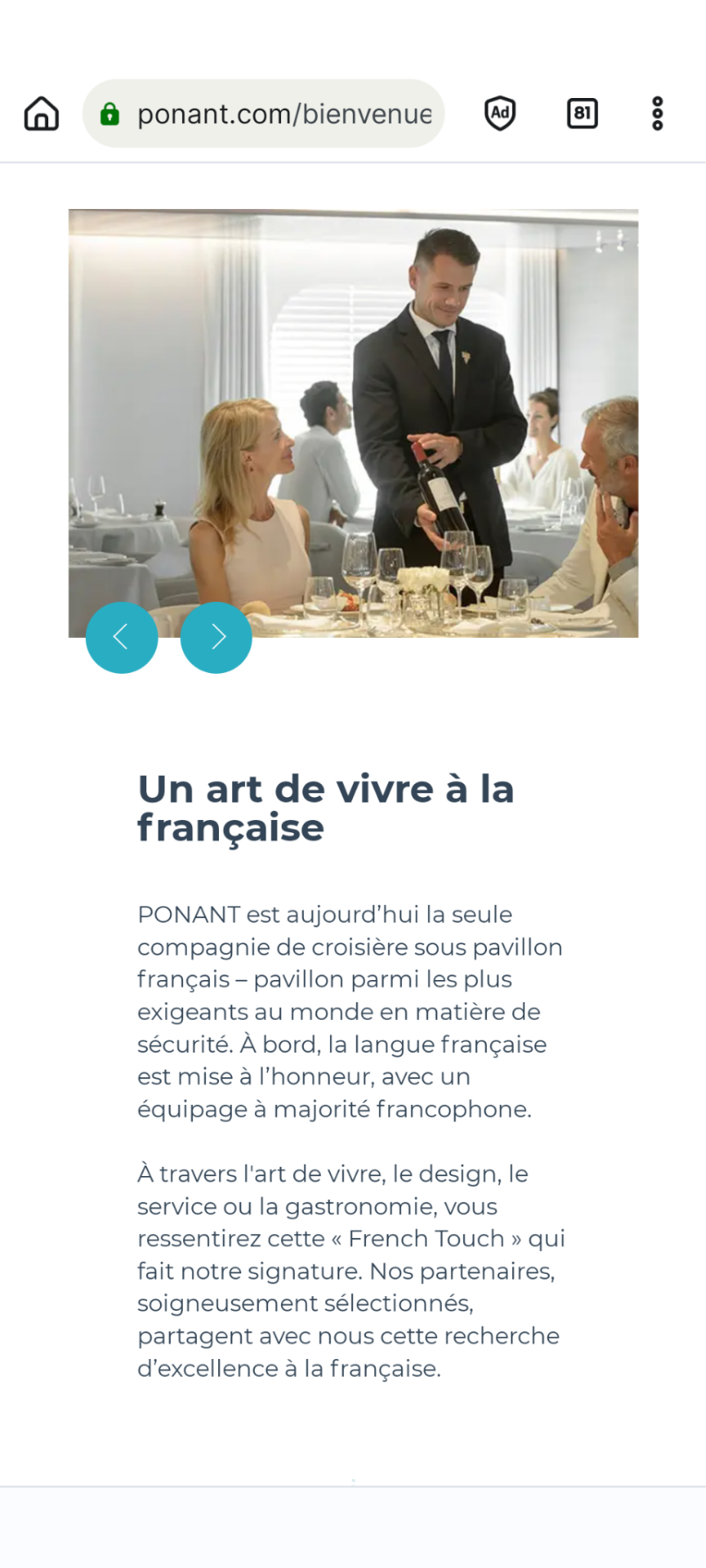#Ponant
Explore tagged Tumblr posts
Text

Les insulaires ! Festival des îles du ponant
#11 cette année à l'île de Sein 27-29/09/2024
C'est dans un mois, on y sera !
#sein#insulaires#festival#ponant#bretagne#affiche#iles#breizh#bzh#finistere#brittany#ile de sein#les insulaires#island
7 notes
·
View notes
Photo
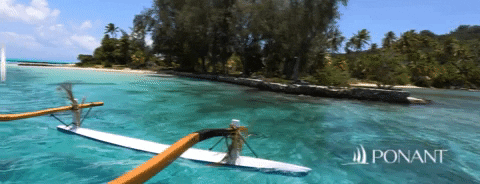
(via GIPHY)
15 notes
·
View notes
Text










Ponant
( Depuis 1964, par Charrier / Parfums de Charières )
Fragrance Notes: Bergamot, Mandarin Orange, Apricot, Passionfruit, Peach, Caramel, Chocolate, Patchouli, Vanilla
(Dividers by: @cafekitsune )
#partycore#1960s#1964#ponant#charrier#france#perfume#coquette aesthetic#dark coquette#coquette fashion#coquette#vintage coquette#not mine#hideelee#carole de faveau
2 notes
·
View notes
Photo

(via Ponant übernimmt Aqua Expeditions: Luxus-Expeditionen erobern neue Gewässer)
0 notes
Photo

0 notes
Text
Le Ponant becomes first superyacht awarded the Relais & Châteaux label | In Trend Today
Le Ponant becomes first superyacht awarded the Relais & Châteaux label Read Full Text or Full Article on MAG NEWS
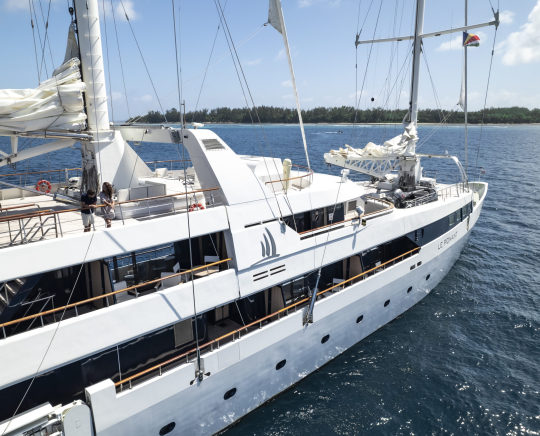
View On WordPress
#Celebrities#Le Ponant becomes first superyacht awarded the Relais & Châteaux label#Money#Motors#Politics#ShowBiz#Sport#Tech#UK#US#World
0 notes
Text
Walking on water.
After reaching the sea ice at 82° North, we came across this young male Polar Bear riding the storm swells and navigating effortlessly through a maze of pack ice. One of the most incredible sights I’ve witnessed in the Arctic. Watch until the end to see the power of the swell moving beneath the ice.
Captured on the Ronin 4D aboard @lecommandantcharcot on our way to the North Pole.
#exploration #ponant #arctic #polarbear
1K notes
·
View notes
Text



Jeanne d'Arc (helicopter carrier)
Il n'est pas nécessaire de présenter la Jeanne d'Arc. Ambassadrice de la France autour du monde, la �� Jeanne » a reçu et formé au cours de ses 45 campagnes d'application, des milliers d'officiers de Marine et des différents corps d'officiers de la Marine (commissaires, médecins, administrateurs des affaires maritimes). Ce fut un moule unique où se forgèrent les caractères, où les élèves de l'Ecole navale passaient du statut d'étudiant à celui de marin, s'engageant pour la première fois dans les postes de responsabilité et de compétences techniques qui allaient être les leurs tout au long de leur carrière militaire.
Construit à Brest et baptisé à l'origine La Résolue, ce porte-hélicoptères fut mis en service le 16 juillet 1964 (date du changement de nom). Il a remplacé dans cette fonction l'ancien croiseur Jeanne d'Arc.
Navire de prestige, voué au bals, aux fastueuses réceptions et aux visites de hautes personnalités lors des escales, la « Jeanne » n'en fut pas moins un bâtiment militaire qui pouvait intervenir en cas de crise, grâce à ses possibilités multi-rôles. Dans cette fonction, il ne pouvait embarquer que 4 hélicoptères lourds. En temps de guerre, il devait être utilisé comme porte-hélicoptères anti-sous-marins, comme porte-hélicoptères d'assaut ou comme transport de troupes. Ce ne fut jamais le cas, mais le navire fut plusieurs fois engagé dans des opérations humanitaires (en 1988, 1998 et 2005 notamment) mais aussi dans des interventions comme la libération des otages à bord du voilier Ponant, en 2008.
#PH#Jeanne d'Arc#Ambassadrice#France#autour du monde#Croiseur#Porte Hélicoptère#helicopter carrier#Marine Française#Armée#Naval#armée de l'air#Tour du Monde#World Tour#Marine Nationale
3 notes
·
View notes
Text
Il aspirait à une vie meilleure, aux sourires de sa femme et aux bonheurs de ses enfants. Croyait-il au destin ? Force est d'estimer la providence, il avait une vision arrêtée de la morale occidentale qui à l'image de la mode suivait des guides ou des gourous le laps d'une saison comme une girouette le long d'un vent catabatique, l'ouest avait quitté les sommets des courants scientifiques, las d'observer une doctrine religieuse ou géométrique, plus largement appartenir à une famille philosophique ; l'Europe d'avant le ponant, d'avant le bosphore : l'Empire. Il n'a jamais été né pour regretter son village sur les pentes escarpées d'un lœss oublié du progrès, étant issu des palais profonds, des plafonds ornés de fils d'or ; fils d'un régisseur tyrannique, aucune augure ne lui avait été donnée qu'il succederait à son père.
3 notes
·
View notes
Text

Bière Triple "La Bourlingue" de la brasserie Le Grain du Ponant savourée sur la terrasse ombragée de la crêperie La Goélette de Doëlan, Bretagne, mai 2024.
5 notes
·
View notes
Text
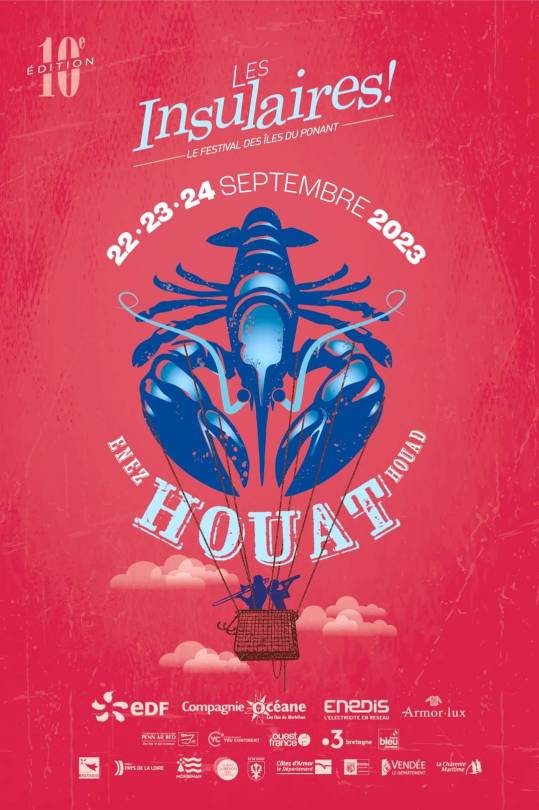
Les insulaires ! 22-24 septembre - Enez Houad (île d'Houat)
Festival des îles du Ponant
#insulaires#festival#ponant#iles#bretagne#breizh#houat#bzh#island#enez houad#houad#enez#brittany#affiche#rencontres
9 notes
·
View notes
Text
Weird Winds: A map of French winds
If you do not know, France doesn't just have one or two or four winds. When you look at the winds of France, you won't just find your typical cardinal division East/West/North/South. Oh no! You will get tons and tons of winds, with all sorts of bizarre names. Each region has its own set of winds, with its own names, meteorological effects, and cultural associations. The result is that people can write entire books about the French winds just by listing them all.
I just found a little website that can serve as a good introduction to the winds of France. It is a website dedicated to learning French when you're a foreigner, and it has one tiny page about the winds of France. It notably offers this simplified map selecting fifteen winds:
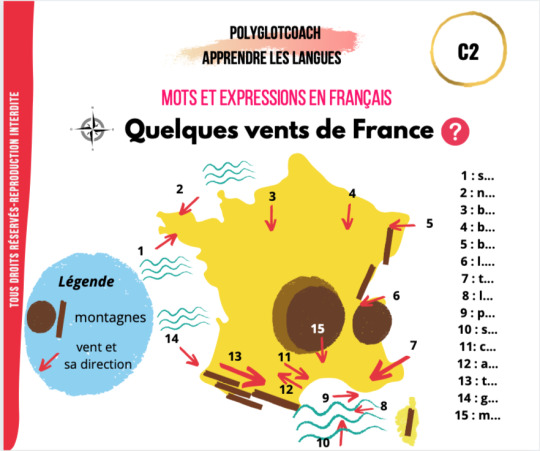
Here is the list of the winds, corresponding to the numbers on the map.
Le suroît. A South wind of the Bretagne region, hot and humid.
Le nordet. A Bretagne North wind, that makes the air colder and causes downpours.
La bise. A dry and cold North wind.
La bise. (Yes, they put it twice)
Baslerwind, an Eastern wind of Alsace.
La lombarde. A dry and violent winds of the Alps and the Savoie region.
La tramontane. A violent wind of the Languedoc and the Roussillon.
Le levant. The gentle and humid East wind.
Le ponant. The (usually) soft, Mediterranean West wind.
Le sirocco. The hot wind that carries into France the Sahara sands.
Le cers. The West wind of the Roussillon region, known to scatter clouds away and bring a sunny weather. The cers is considered a componants of the tramontane.
L'autan. An often strong sea wind, that blows in the opposite direction of the tramontane in the Toulouse region and the Tarn. It can be gentler or colder depending on the places.
La tramontane. A cold and strong wind that blows in the Languedoc-Roussillon. It is also the North wind of Provence.
La galerne. A local wind of the Pays Basque, which blows by "hits" (in an irregular way). Through strong gusts, it lowers the temperature and brings rain.
Le mistral. A typical wind of Provence, which also blows in the Var region and in Corsica. It is known to usually blow several days in a row.
The website also had links to other pages that explained in greater details a handful of those winds. I'll put the explanations below:
A) Le Ponant. When it comes to regional Mediterranean winds, le Mistral or la Tramontane usually come to mind - but people tend to forget le Ponant, whose name indicates its position as the West wind. "Ponant" itself is a Latin-inherited term designating the place where the sun sets (opposing the "levant", where the sun rises), and thus in terms of winds, le ponant wind is the west wind, opposed to the Levant wind, the east wind. However, originally, the sailors used "ponant" and "levant" merely as cardinal directions (West/East), and by extension to designate the two bodies of water they travelled across: the Ponant was the Atlantic Ocean, the Levant the Mediterranean Sea. As such, the French sailors called the "Ponant ports" towns such as Brest or La Rochelle, and "Levant ports" Marseille or Sète. It was only afterward that the two terms came to designate the East and West winds.
The Ponant is a western wind with southern components. It is usually soft and gentle, especially when it blows from the south-west, even though it can be strong on the Balearic area. While it blows all year long, it is most present during spring and autumn.
B) Autan. The autan wind is known for its violence by the inhabitants of the Tarn and Toulouse regions. It is even often called "the mad wind" or the "insane wind". The Autan is one of the three local winds of the Occitanie region, alongside the Tramontane and the Marin. While it is mostly focused on Tarn and Toulouse, it can sometimes touch Quercy and Rouerge. The autan is actually the prolongation of the sea-wind blowing on the coasts of the Languedoc-Roussillon. The "triangle" between which the Autan is the most common is formed by Toulouse, Castelnaudary and Castres. It forms the opposite of the tramontane, which comes from the Mediterranean sea. The autan wind can go from 10 km per hour to 90 km per hour in the span of just two hours, and it can come back several times throughout the year.
Legend claims that the autan wind drives people mad - the superstition seems to come from the fact that the autan wind is very local, meaning in a precise area it can blow very strongly, while it is still and peaceful right next door. This is because the Autan is created by the presence of the Pyrénées, the wind being "channeled" by a series of valleys (the Agout valley, the Tarn valley, the Lauragais-Garonne). When the wind arrives from the Mediterranean sea, it is very humid, but by the foehn effect it dries up by going over the Corbières and the Black mountain - and it is only once the wind is dried up that it becomes the "autan". There are actually two types of autan according to local beliefs, the "white" autan and the "black" autan. [Note: the website unfortunately does not give the exact difference between the two]
C) Le Cers. "Le cers" is actually one of the oldest, if not THE oldest wind-name in the French language. Blowing from west to east, this wind regulates and rules the weather of the Languedoc-Roussillon region - more precisely of its western half. This wind, that removes the rain and scatters the clouds, blowing on all season, usually three days by four, is what gives to the region is very sunny and shining weather, and it is thus considered a "healthy" wind. You can even see how the Cers sculpted the region: the trees of the area are all leaning to the east! And the old houses of the area all are turned with their back towards the cers, to prevent heating problems. All the gardens, great openings, pools, terraces and other things of the sort are placed east. The cers is not a mountain wind, but a plain wind, that passes between the Massif central and the Pyrénées, through Naurouze. On the Golfe du Lion, there is absolutely no north wind - only the cers that blows from inside the lands. On the heights of Saint-Cyr, near the towns of Ouveillan and Sallèles-d'Aude, you can find a former Roman temple that was built to the god Circius - aka, the Latin embodiment of the cers wind... And this temple seems to be located precisely at the center of what is known as the sunniest area of all France.
D) La galerne is a well known phenomenon of the Pays Basque region, called "enbata" by the locals, and the terror of the sailors. A "coup de galerne" (a galerne hit) is a brief and local phenomenon of the Pays Basque coasts, which sometimes extends itself to the south of the Garonne region. You recognize a galerne by the sudden degradation of the atmospheric conditions, and a brutal drop in temperature. The wind suddenly blows from the north-west, and it can blow really hard, up to a 100 km per hour and above. All of this is usually happening alongside a gathering of clouds, and outbursts of rain. The galerne can hit all year long, but is most frequent between spring and summer, usually between April and September.
The galerne starts out as a little movement of cold air coming from the Golfe de Cascogne. This movement of the air, carried on by winds, becomes stronger thanks to the mountains that cover the Spanish coasts (the Cantabrique mounts). These mountains force the wind to go towards the Pays Basque, while strengthening it - without these mountains, there wouldn't be any galerne. Since this air comes from the sea, it is colder than the local Basque air, which comes from inland. This is what causes the brutal drop in temperatures - and of course, the humidity of the galerne is also because it is carried from the sea.
3 notes
·
View notes
Text
An update (less than a week later): the French cruise line Ponant has unveiled a concept for a zero-emission cruise ship that would get up to 50 % of the propulsion energy needed from sails.

Now of course, because the need for energy does not rise linearly as speed increases, this probably translated to a smaller fuel saving than 50 % (which is probably why they chose to word it like that), but the ship will also be equipped with solar panels and hydrogen fuels cells to further diminish the need for fossil fuels. The press release for this skirts around the whether or not the ship will have conventional diesel engines alongside the newer things, but I presume the answer is yes as "carbon capture technology" is also mentioned alongside the other things.
And of course, a lot of companies come forward with these kinds of concepts but don't ever actually deliver on them (Wallenius Wilhelmsen have been marketing their Orcelle concept for over 15 years, but they still keep building conventional ship instead of actually realising the ship), but Ponant say they are negotiating with shipyards and are planning on a 2030 entry into service. Which sounds like a long time, but when you're building a prototype design with new technology on a passenger ship it's actually quite fast.
(Which unfortunately also illustrates how slow the change will be. Presuming its not made obsolete for other reasons or simply poor maintainance, an oceangoing passenger vessel will easily have a 50-year lifespan. This means that even if all ships built after 2030 will be zero-emissions ones - and they won't - today's fossil fuel -powered ships will keep sailing until 2080. Unless international legislation makes they use impossible or impractical).

145K notes
·
View notes
Text
Ponant übernimmt Aqua Expeditions: Luxus-Expeditionen erobern neue Gewässer
Ponant, der französische Anbieter von Luxus-Expeditionskreuzfahrten, hat eine Mehrheitsbeteiligung an Aqua Expeditions erworben. Das Unternehmen ist bekannt für seine exklusiven Fluss- und Hochseekreuzfahrten in Südamerika und Südostasien. Aqua Expeditions betreibt derzeit kleine Schiffe in einigen der artenreichsten Regionen der Welt, darunter die Galapagosinseln, Raja Ampat, Komodo und der…
#aldabra#Amazonas#Aqua Expeditions#Artémis Group#Übernahme#Expeditionskreuzfahrt#Francesco Galli Zugaro#Galapagos#Hervé Gastinel#Luxuskreuzfahrt#nachhaltigkeit#Ostafrika#Ponant#Südostasien#Seychellen#Tansania
0 notes



